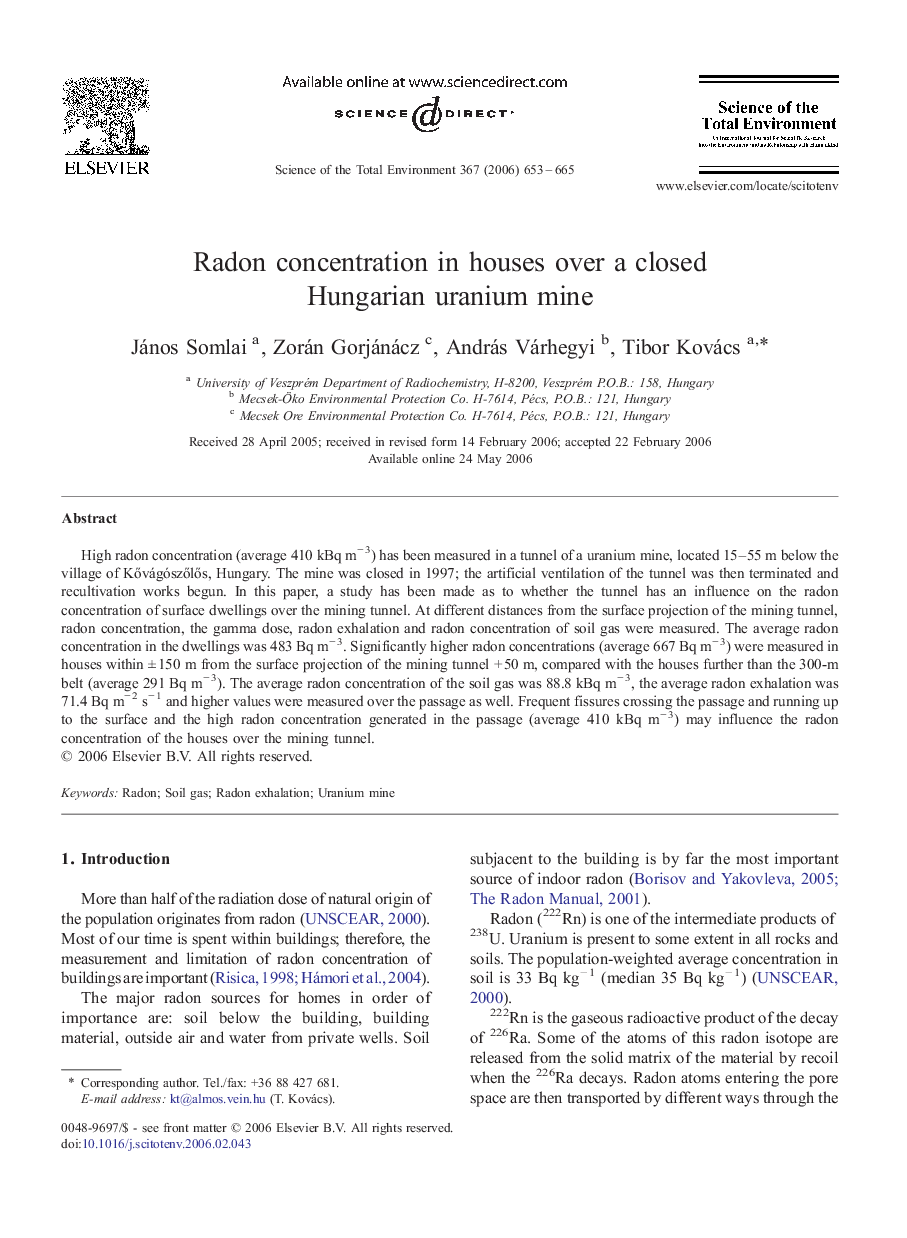| Article ID | Journal | Published Year | Pages | File Type |
|---|---|---|---|---|
| 4433818 | Science of The Total Environment | 2006 | 13 Pages |
High radon concentration (average 410 kBq m− 3) has been measured in a tunnel of a uranium mine, located 15–55 m below the village of Kővágószőlős, Hungary. The mine was closed in 1997; the artificial ventilation of the tunnel was then terminated and recultivation works begun. In this paper, a study has been made as to whether the tunnel has an influence on the radon concentration of surface dwellings over the mining tunnel. At different distances from the surface projection of the mining tunnel, radon concentration, the gamma dose, radon exhalation and radon concentration of soil gas were measured. The average radon concentration in the dwellings was 483 Bq m− 3. Significantly higher radon concentrations (average 667 Bq m− 3) were measured in houses within ± 150 m from the surface projection of the mining tunnel + 50 m, compared with the houses further than the 300-m belt (average 291 Bq m− 3). The average radon concentration of the soil gas was 88.8 kBq m− 3, the average radon exhalation was 71.4 Bq m− 2 s− 1 and higher values were measured over the passage as well. Frequent fissures crossing the passage and running up to the surface and the high radon concentration generated in the passage (average 410 kBq m− 3) may influence the radon concentration of the houses over the mining tunnel.
